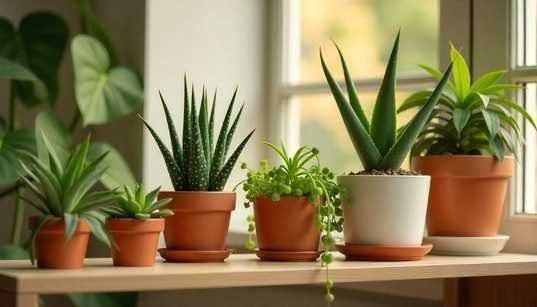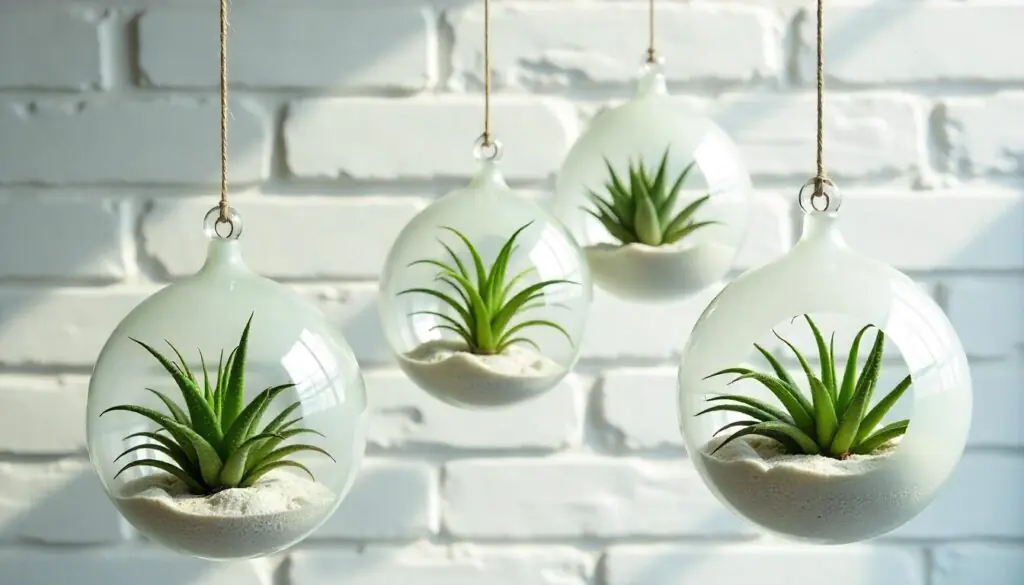Introduction to Air Plants
Air Plants Benefits, scientifically known as tillandsia, are a remarkable group of plants notable for their unique ability to thrive without the need for soil. Originating from the bromeliad family, these plants possess specialized structures called trichomes, which enable them to absorb moisture and nutrients directly from the air. This adaptation allows air plants to flourish in a variety of environments, making them an intriguing addition to both indoor and outdoor spaces.
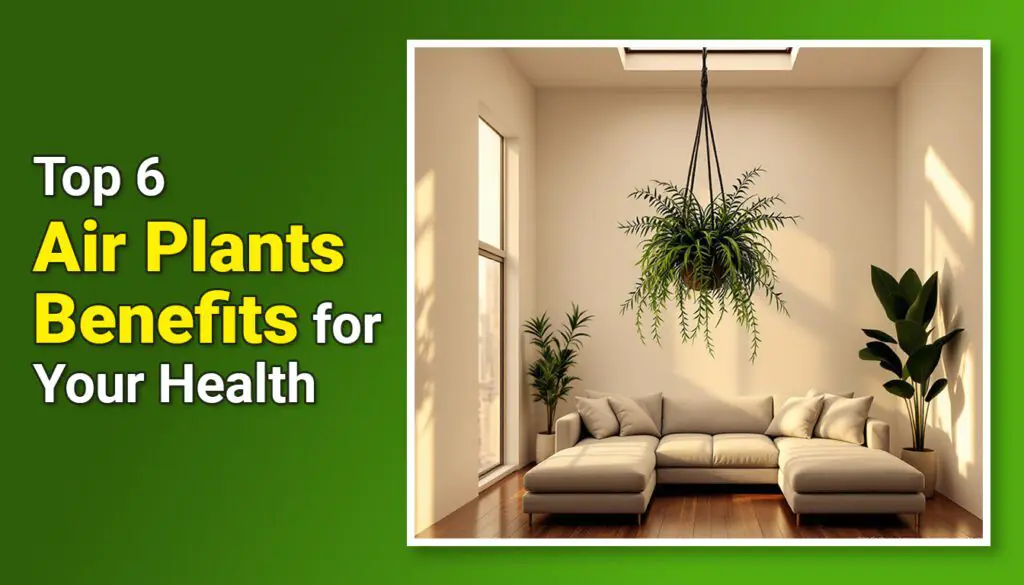
As their name suggests, air plants primarily gather moisture from the atmospheric humidity and rainfall. They exhibit a diverse array of shapes, colors, and sizes, which contributes to their appeal in home decor and lifestyle trends. Due to their minimal care requirements, they have gained intense popularity among plant enthusiasts and decorators alike. They challenge traditional notions of plant care, presenting a fascinating option for those looking to beautify their surroundings without the extensive maintenance commonly associated with soil-based plants.
The increasing trend of incorporating air plants into interiors speaks volumes about the contemporary appreciation for nature and wellness. Placed on shelves, in terrariums, or even hung from walls, these plants can infuse a sense of serenity into any space. Furthermore, air plants are often associated with various health benefits, owing to their air-purifying properties and ability to enhance mental well-being. This introduction will pave the way for a more detailed exploration of the specific benefits these remarkable plants can provide, highlighting both the aesthetic and health-focused advantages they bring to our lives.
01. Air Plants Improve Indoor Air Quality
Air Plants Benefits, also known as Tillandsia, are unique in that they do not require soil to thrive; instead, they absorb moisture and nutrients through their leaves from the air. This fascinating trait contributes significantly to their role in enhancing indoor air quality. One of the primary benefits of air plants is their ability to absorb harmful toxins commonly found in indoor environments, such as formaldehyde, benzene, and xylene. These substances, often emitted from household items like furniture, paint, and detergents, can have detrimental effects on health if inhaled over extended periods.
Scientific studies have shown that incorporating air plants into home and office settings can positively impact air purity. A study conducted by NASA in the late 1980s highlighted that certain species of plants, including air plants, can effectively reduce indoor air pollutants. These plants carry out a process known as phytoremediation, wherein they break down harmful chemicals and convert them into non-toxic substances. By doing so, they not only purify the air but also enhance overall air quality, making spaces feel fresher and more invigorating.
Also Read Trending Post
- 20 High Protein Meal Prep Ideas for Weight Loss, Muscle Gain & Busy Lifestyles (2025 Guide)
- Healthy and Sustainable Rooftop Gardening Guide for Beginners: Simple and Effective Methods
- Eco-Friendly Meal Prep Ideas: 10 Essential Tips for Healthy and Sustainable Eating
- Microplastics: Invisible Danger in Our Food, Water, and Environment
- Top 25 Plant-Based Protein Sources Chart: Your Ultimate Visual Guide for a Healthier Diet!
Moreover, air plants contribute to increased oxygen levels in indoor areas. Through photosynthesis, they convert carbon dioxide into oxygen, promoting a healthier and more breathable environment. This process is particularly valuable in urban settings where outdoor air pollution may hinder natural air circulation, creating a need for effective indoor air purification solutions. Integrating air plants into living spaces not only beautifies the environment but also serves a practical purpose by improving air quality. As research continues to back the advantages of using air plants as natural air purifiers, they are becoming a popular choice for those looking to optimize their indoor air quality.
02. Air Plants Promote Mental Well-Being
The presence of air plants in our living and working environments can significantly contribute to mental well-being. Research has increasingly demonstrated that interacting with plants can reduce stress levels and promote relaxation. By incorporating air plants into your daily life, you create a green sanctuary that encourages mindfulness and tranquility. The natural beauty and unique aesthetics of air plants serve as a visual anchor, providing a refreshing contrast to the often monotonous surroundings of modern life.
Studies have indicated that engaging with greenery can trigger a physiological response, reducing cortisol levels— the hormone primarily responsible for stress. Furthermore, this interaction has been associated with improved mood and cognitive function. For instance, a study conducted by the University of Exeter found that employees working in environments enriched with plants reported a significant increase in overall satisfaction and productivity. Such findings highlight the numerous air plant benefits, revealing how they can foster an atmosphere conducive to mental clarity and focus.
In addition to reducing stress, air plants can also enhance creativity and problem-solving abilities. An environment filled with nature can provide a sense of rejuvenation, allowing individuals to feel more inspired and connected to their surroundings. Experts advocate for the incorporation of greenery in both personal and professional spaces, recognizing the merit of air plants as tools for enhancing mental health. The mere act of nurturing these resilient plants encourages a sense of responsibility and growth, further cementing their role as therapeutic allies in managing daily stressors.
In conclusion, the mental health benefits of air plants extend beyond simple aesthetics. By incorporating these unique plants into your home or workspace, you can create an uplifting environment that reduces stress, enhances mood, and boosts overall productivity, reaffirming the vital connection between nature and mental well-being.
03. Air Plants for Humidity and Respiratory Health
Air plants, scientifically known as Tillandsia, are unique for their ability to absorb moisture through their leaves, providing a natural way to increase humidity levels in indoor environments. Maintaining optimal humidity is essential for respiratory health, as dry air can exacerbate symptoms of allergies and asthma. According to studies, a humidity level between 30% and 50% can help alleviate these symptoms by keeping the airways moist, reducing irritants, and promoting overall respiratory comfort.
When the air is too dry, it can lead to a range of health issues, such as dry throat, sinus irritation, and increased susceptibility to respiratory infections. Air plants help mitigate these risks by naturally adding moisture to the air through transpiration. By doing so, they create a microenvironment conducive to improving respiratory function and overall well-being. Moreover, research has indicated that enhanced indoor humidity levels can significantly reduce the survival rate of airborne viruses, further emphasizing the importance of incorporating plants into living spaces.
Caring for air plants to maximize their humidity benefits involves placing them in well-lit areas, ensuring they get adequate water through misting or soaking, and maintaining airflow around them. A simple strategy is to group several air plants together, which can create a localized increase in humidity and amplify their overall effect on the environment. Additionally, placing air plants close to heaters or air conditioning vents can also be beneficial, as the moisture from the plants will counterbalance the effects of dry, conditioned air.
Incorporating air plants into your home or office not only enhances visual aesthetics but also significantly contributes to improved humidity levels, ultimately benefiting respiratory health. The air plants benefits extend beyond ornamental appeal, offering practical solutions for maintaining a healthy indoor atmosphere.
04. Air Plants as Natural Stress Relievers
The modern lifestyle often leads to elevated stress levels, making the need for effective stress relief methods increasingly critical. One such method involves the incorporation of air plants into your living environment. These unique plants, known for their ability to thrive without traditional soil, offer both aesthetic appeal and therapeutic benefits. Engaging in the care of air plants can foster relaxation and provide a sense of calmness, thereby serving as natural stress relievers.
The act of tending to air plants can promote mindfulness, encouraging individuals to be present in the moment. This engagement with nature—whether through watering, misting or simply observing the plants—can significantly reduce feelings of anxiety. Many people find that setting aside time for plant care allows them to step away from their daily stressors and reconnect with the soothing aspects of nature. As they immerse themselves in this nurturing process, they experience a palpable decrease in tension.
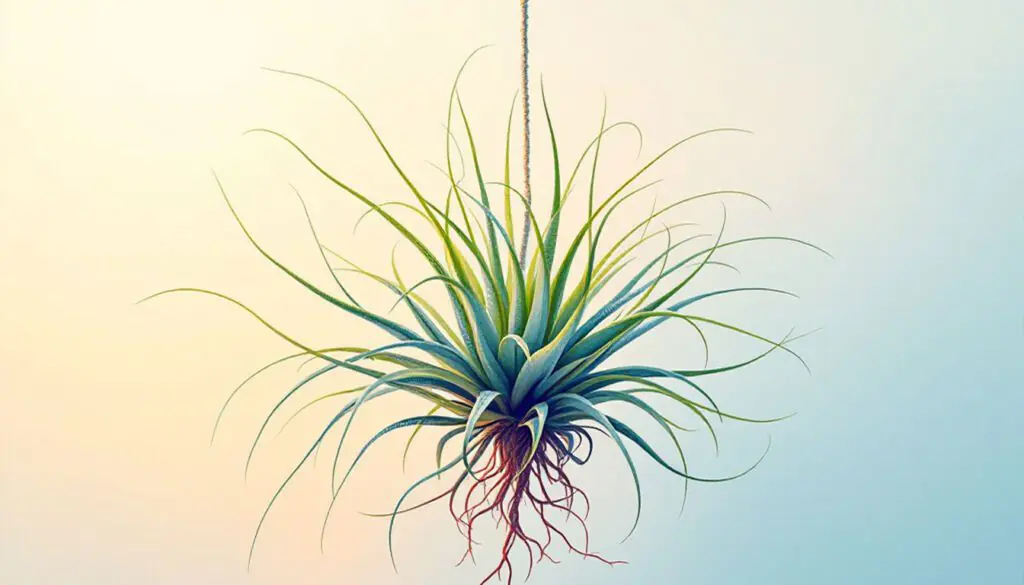
Personal anecdotes and user testimonials reveal that the therapeutic benefits of air plant care extend beyond mere aesthetics. Numerous individuals have reported that focusing on the needs of these resilient plants provides a welcome distraction from everyday pressures. For instance, one user shared how spending time arranging her air plants not only beautified her home but also transformed her mindset, allowing her to center her thoughts and unwind after a long day. Similarly, others have echoed sentiments about the calming effects of their air plants, which seem to thrive on the attention given to them.
Incorporating air plants into your living spaces can potentially yield significant stress-relief benefits. The combination of caring for these unique plants and the tranquillity derived from their presence can create a serene environment that supports overall well-being. Thus, integrating air plants into your life may not only beautify your surroundings but also contribute to a healthier, more balanced lifestyle.
05. Enhancing Aesthetic Appeal and Mood with Air Plants
Air plants, known scientifically as Tillandsia, serve not only as living decor but also as effective mood enhancers in both home and office settings. Their unique appearance and low-maintenance nature make them ideal for creating visually appealing arrangements that can elevate the ambiance of any space. By incorporating air plants into various environments, individuals can cultivate an atmosphere that promotes relaxation and well-being.
The aesthetic appeal of air plants largely stems from their diverse forms and textures. These plants can be found in a range of species, each offering different shapes and colors, from vibrant greens to silvery hues. Placing air plants in decorative holders, terrariums, or hanging displays allows for creative expression, making them suitable for any interior design style, whether modern, rustic, or eclectic. When arranged thoughtfully, these plants not only beautify a space but also contribute to a sense of tranquility.
Adding air plants to your surroundings can have a profound effect on your mood. Greenery has long been associated with feelings of calm and relaxation. Studies suggest that the presence of plants in indoor environments can reduce stress and anxiety levels. Air plants, by virtue of their unique qualities, facilitate this effect. Their ability to thrive in various lighting conditions enhances their versatility, allowing them to brighten dim corners or serve as striking focal points in well-lit areas.
To maximize the benefits of air plants in enhancing aesthetic appeal and mood, consider styling tips such as grouping different species for a dynamic display or using them in unexpected locations, such as on bookshelves or bathroom counters. Their air-purifying properties further complement their role in promoting health and well-being, making air plants not only a choice for decoration but also a strategic addition to any environment.
06. Air Plants and Their Role in Sustainable Living
Air plants, scientifically known as Tillandsia, are unique members of the bromeliad family. They are distinguished by their ability to thrive without soil, deriving moisture and nutrients from the air. This remarkable adaptation not only contributes to their low-maintenance nature but also aligns them closely with sustainable living practices. By requiring minimal resources — essentially just water, sunlight, and high humidity — air plants present an environmentally friendly option for plant enthusiasts and indoor gardeners alike.
One of the most significant air plants benefits is their contribution to reducing environmental footprints. Unlike traditional houseplants that may require extensive soil amendments and fertilizers, air plants can flourish with little to no of these inputs. This translates to lower consumption rates of water and other gardening resources, promoting a greener approach to indoor gardening. Furthermore, their unique characteristics enable them to adapt to a variety of living conditions, reducing the need for exotic plant transportation and cultivation practices that often harm ecosystems.
Moreover, air plants play a pivotal role in promoting biodiversity. By integrating them into various habitats, such as home décor or community gardens, individuals can help support local ecosystems. These plants can host a wide range of microfauna, including beneficial insects and pollinators, which further contribute to environmental balance. By caring for air plants, individuals support eco-friendly practices that can positively impact the surrounding biodiversity, reinforcing the delicate web of life crucial to our planet’s health.
In essence, embracing the air plants benefits not only enriches personal living spaces but also fosters a broader commitment to sustainability and ecological responsibility, making them an ideal choice for environmentally conscious individuals.
How to Care for Air Plants
Air plants, also known as Tillandsia, are unique and low-maintenance flora that thrive without soil and offer numerous benefits. Care for these resilient plants is essential to ensure they flourish in your home. To start, understanding their watering needs is crucial. Air plants absorb moisture through their leaves, making it important to hydrate them adequately. A popular method is to submerge the plants in room-temperature water for about 20 to 30 minutes once a week. After soaking, gently shake off the excess water and allow them to dry upside down for a few hours. This prevents water from pooling in their base, which can lead to rot.
In addition to proper watering techniques, air plants require specific light conditions to prosper. They thrive in bright, indirect light environments. Direct sunlight can cause the leaves to scorch, while too little light can hinder growth. Ideally, placing them near a window with filtered light, or using artificial grow lights for about 12 hours daily, will help maintain their vibrant appearance and health. Regularly rotating their positions can also provide a more even exposure to light.
Furthermore, the ideal placement of air plants plays a significant role in their care. These plants can adapt to various spaces—from shelves to hanging decorations—making them versatile home accessories. When choosing a spot, consider areas with good airflow to support their transpiration process. Although air plants can tolerate a wide range of temperatures, they flourish best in environments ranging from 60°F to 80°F.
By following these simple care guidelines, you can ensure your air plants not only survive but thrive, allowing you to enjoy their many air plant benefits, such as improved air quality and aesthetic appeal in your living space.
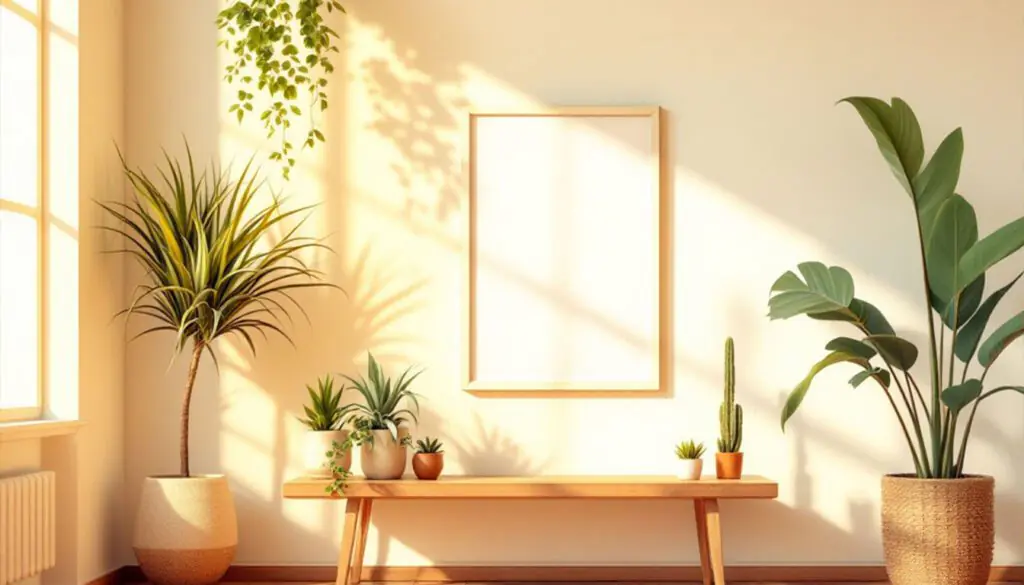
Best FAQs About Air Plants Benefits
Air plants, scientifically known as Tillandsia, are an excellent choice for plant lovers who value beauty, versatility, and minimal maintenance. These unique plants offer various advantages, making them a popular addition to homes and offices. Below, we explore the most frequently asked questions about air plants and their benefits.
Do Air Plants Have Any Benefits?
Yes, air plants provide a variety of benefits that make them highly desirable:
- Air Purification: Air plants absorb toxins and pollutants from the environment, improving indoor air quality.
- Low Maintenance: Since they don’t require soil, they are incredibly easy to care for.
- Decorative Appeal: Their unique shapes and sizes make them perfect for enhancing interior decor.
- Stress Relief: Like all greenery, air plants can help reduce stress and promote relaxation.
- Space Efficiency: These plants are ideal for small spaces as they can be placed almost anywhere.
Where Do You Put Air Plants?
Placement is key to keeping air plants healthy and thriving. Here are some great spots to display them:
- Near Windows: Bright, indirect sunlight is ideal for air plants.
- Bathrooms: They thrive in the humidity found in bathrooms, provided there’s some natural light.
- Mounted Displays: Attach them to wood, shells, or decorative frames for a unique look.
- Terrariums: Create a mini garden using glass containers for a stunning effect.
- Desks and Shelves: Add greenery to your workspace or bookshelf.
What Are the Spiritual Benefits of Air Plants?
Air plants are more than just decorative pieces; they are believed to bring positive energy to any space. Their spiritual benefits include:
- Symbol of Resilience: Their ability to thrive without soil symbolizes strength and adaptability.
- Energy Cleansing: Air plants are thought to absorb negative energy and promote harmony.
- Mindfulness: Caring for air plants can encourage mindfulness and a deeper connection with nature.
How Do I Know If My Air Plant Is Happy?
A happy air plant displays clear signs of good health:
- Vibrant Colors: Healthy air plants exhibit bright green, silver, or red hues.
- Firm Leaves: Leaves should feel firm and not wilted or dry.
- Growth: Look for new leaves or pups (baby plants).
- Blooming: If your air plant blooms, it’s thriving.
Signs of distress include browning tips, curling leaves, or a lack of growth.
Why Are Air Plants Special?
Air plants are unique for several reasons:
- No Soil Required: They absorb nutrients through their leaves rather than roots.
- Epiphytic Growth: They grow on other surfaces without harming the host.
- Diverse Species: With over 600 varieties, they offer a range of shapes, sizes, and colors.
- Adaptability: Air plants can thrive in different environments, from homes to offices.
How Long Do Air Plants Live?
With proper care, air plants can live 2 to 5 years or more. Their lifespan depends on their species and the care they receive. Many air plants produce pups, extending their life cycle and allowing you to enjoy them for years to come.
Do Air Plants Need Sun?
Yes, sunlight is essential for air plants. They thrive in bright, indirect sunlight, which helps them photosynthesize. Direct sunlight should be avoided as it can scorch their leaves. Artificial grow lights can also be used if natural light is insufficient.
Do Air Plants Purify the Air?
Air plants contribute to air purification by absorbing carbon dioxide and other airborne toxins through their leaves. While their impact may not be as significant as larger plants, they still improve indoor air quality.
Do Air Plants Need Water?
Although air plants don’t need soil, they do require regular watering. Here’s how to keep them hydrated:
- Soaking: Submerge the plants in water for 20-30 minutes once a week.
- Misting: Lightly mist 2-3 times a week, especially in low-humidity areas.
- Drying: Always allow air plants to dry completely after watering to prevent rot.
Using distilled or rainwater is best, as tap water may contain harmful chemicals.
Can Air Plants Flower?
Yes, air plants can flower, and their blooms are stunning. Each plant blooms once in its lifetime, producing vibrant flowers that can last for weeks. After blooming, air plants focus on producing pups, continuing their lifecycle.
Do Air Plants Need Oxygen?
Like all living organisms, air plants require oxygen to survive. They absorb oxygen from the air through their leaves, particularly during the night when they release carbon dioxide.
Conclusion: Embrace Air Plants for a Healthier Life
Air plants, also known as Tillandsia, offer a myriad of benefits that can significantly enhance both physical and mental well-being. These unique plants not only improve indoor air quality but also lend themselves to a creative and stylish addition to home decor. By effectively absorbing toxins and releasing oxygen, air plants contribute to a healthier living environment, making them an ideal choice for those looking to create a serene atmosphere.
Moreover, air plants benefit individuals by promoting stress relief and enhancing mood. The presence of greenery has been shown to produce a calming effect, fostering a sense of peace and reducing anxiety. Incorporating these ornamental plants into one’s surroundings can encourage mindfulness and an appreciation for nature, further bolstering emotional stability and overall happiness.
Another notable advantage of air plants is their versatility and low-maintenance care. Unlike traditional houseplants, these epiphytes do not require soil, thriving in a variety of unique displays, such as terrariums, hanging holders, or mounted on driftwood. This accessibility allows even those lacking extensive gardening experience to successfully care for air plants, thereby promoting a thriving green lifestyle.
Encouraging the integration of air plants into daily routines can create not only a visually pleasing environment but also support health and well-being. The numerous positive aspects associated with air plants illustrate their potential as valuable companions in our homes. Readers are encouraged to explore their experiences with air plants, whether through cultivating their own or discovering creative ways to incorporate them into their decor. By embracing air plants, individuals take a meaningful step toward creating a healthier and more vibrant life.








